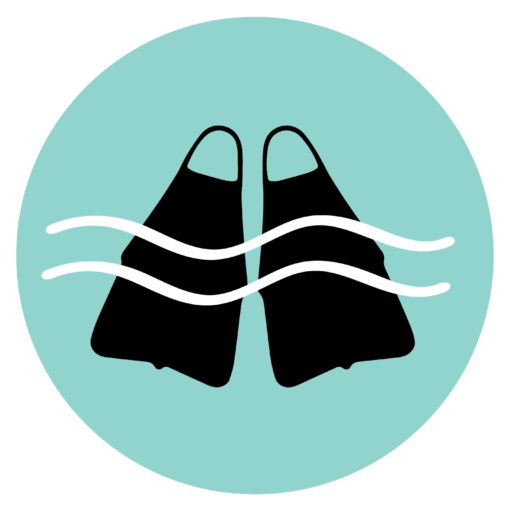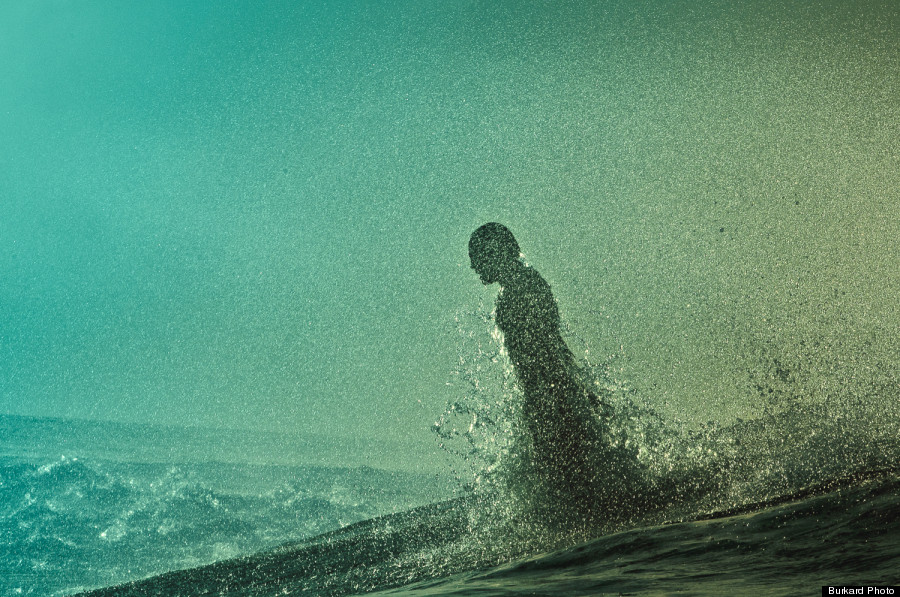1. The Plight of the Torpedo People (2012)
The Plight of the Torpedo People is the best book on bodysurfing that exists today. Period.
Released in 2012 by Woodshed Films, The Plight of the Torpedo People documents the making of Keith Malloy’s debut film, Come Hell or High Water—the first feature-length film made about bodysurfing.
This unique coffee-table book features a collection of photographs, frame grabs, and personal essays from an array of talented artists, including photographers Chris Burkard and Brian Bielmann, writers Jeff Johnson and Dave Parmenter, and bodysurfers Belinda Baggs and Mark Cunningham.
Through beautifully crafted words and photos, The Plight of the Torpedo People illustrates what it looks and feels like to ride waves in the purest form—sans planche.
Some of my favorite passages from the book:
In an age of insane consumerism, the simplicity of a pair of flippers and one’s own body for a craft registered with audiences in ways that people couldn’t quite explain. Perhaps bodysurfing is a sort of mythological transformation entwined with the innate human desire to exceed our physical limitations. Whatever the reason, Come Hell or High Water helps people see surfing a little differently, providing a much-needed reminder that the most intense wave riding experience is often just a short swim away. – Jeff Johnson
Now that bodysurfing is in vogue, it is likely safe to claim that bodysurfing is my favorite form of riding waves. Of course, in the haute surf culture over the last decade or so, fashion has trended toward alternative surfcraft, first the Fish, then the alaia, and now sans planche. Perhaps this retreat into man’s default setting for riding waves can be intellectualized as knee-jerk atavism, a predictably reactionary tendency in a bohemian lifestyle grown overly commercialized. – Dave Parmenter
Rarely have I had the opportunity to photograph something as pure as bodysurfing. It’s the most stripped down form of wave riding—no logos to capture and no money to be made. It’s not like these guys are paying mortgages with their bodysurfing careers, and that’s just the way they like it. To the outside world bodysurfing might be seen as eccentric behavior, but as a photographer I was grounded by the experience of creating these images. It reminded me of what’s important in life and why I love to be in the ocean. – Chris Burkard
2. The Art of Wave Riding (1931)
Published in 1931 by California ocean lifeguard, Ron Drummond, The Art of Wave Riding was one of the earliest written attempts to legitimize the sport of bodysurfing.
This bodysurfing “how-to” manual had an initial print run of about 500 copies and was the first published work on surfing of any kind, making it extremely rare and valuable.
In fact, this book is so rare that I had to request a reading of an original copy at UCLA’s special collections library just to get my hands on it.
Drummond’s intention for writing The Art of Wave Riding was to educate the masses about the sport of bodysurfing:
Wave riding—without a surfboard—is a sport with which few people are familiar, and it is undoubtedly in its initial stages of development. There are no books of instruction on the subject, and at present only a few of the more athletically inclined have become proficient wave riders.
Although Drummond fell short of his goal to usher in a bodysurfing renaissance, he was no doubt the first person to introduce a concise step-by-step methodology for riding waves without a surfboard.
For those readers looking to get into the sport of bodysurfing, this manual is a good place to start (if you can find it).

Some of my favorite passages from the book:
One has only to watch a swarm of bathers at any crowded beach in order to see that thousands of people are interested in the sport. Whenever a good wave for riding comes in, about half the people make an attempt to ride it, and only about one-tenth of one per cent of them even get started on it. It is this pitiful sight of thousands of swimmers, young and old, men and women, always trying and never succeeding, that has urged me to put into print a few hints that I hope will be of some help in teaching the enthusiastic beach-goers the art of body surfing, and thus increase a thousand fold the pleasure derived from ocean bathing.
Hundreds of people have asked me, “What is the knack of wave riding?” There is no simple formula that will enable a person to ride waves. However, there are a few details, which, if known, should prove most helpful. To derive the most pleasure from riding large waves, an all around knowledge of swimming is essential. A powerful stroke, speed, good endurance, and the absence of fear are the primary requisites. However, small waves can be ridden by one who has practically no knowledge of swimming, and because of this fact even the amateur can start practicing immediately.
There are two different methods each of which should be mastered by the beginner. One is with the face down and the arms extended in front of the head, and the other is with the face out of the water and the arms at the sides of the body. Riding with the arms at the sides is the more enjoyable of the two methods and is used in riding large waves; but riding with the hands in front is easier to learn and is the best way to coast in on a wave caught by the swimmer in shallow water after it has broken.


